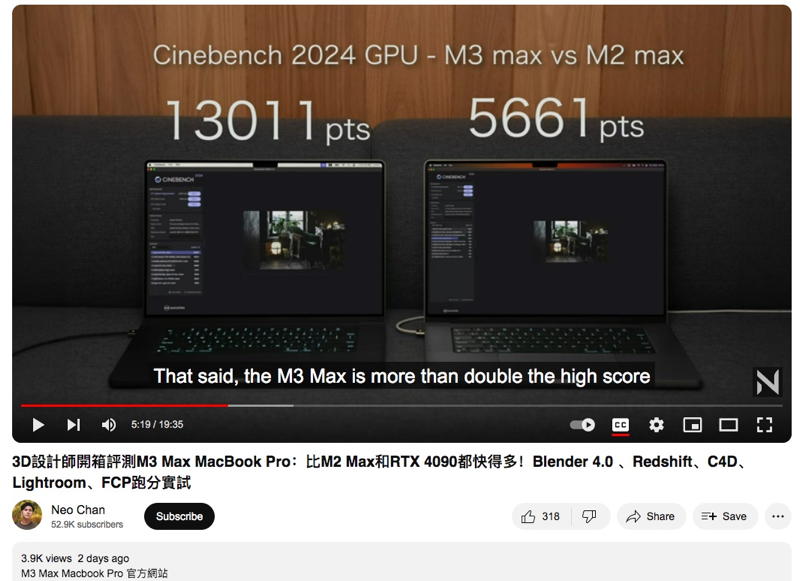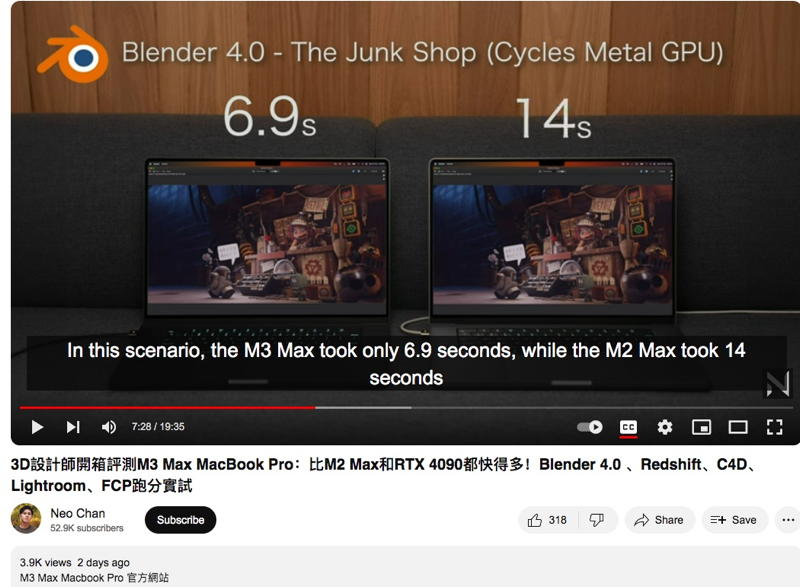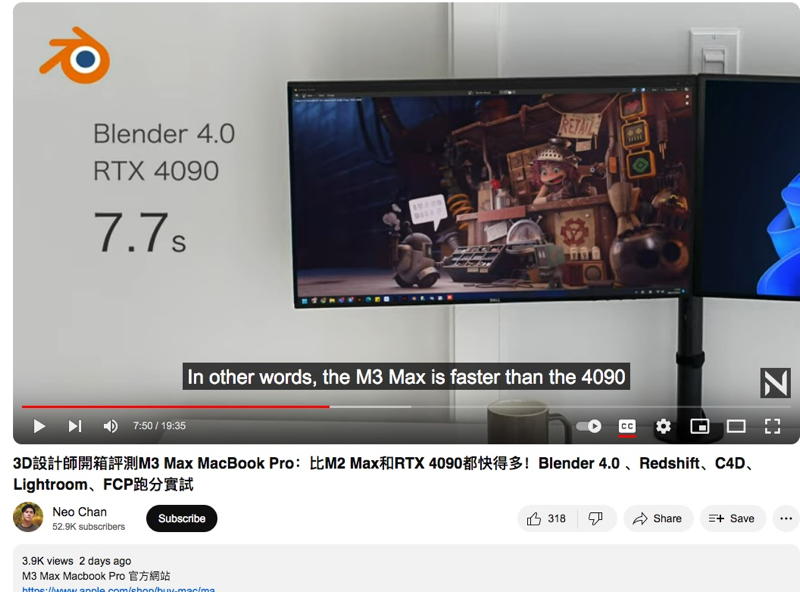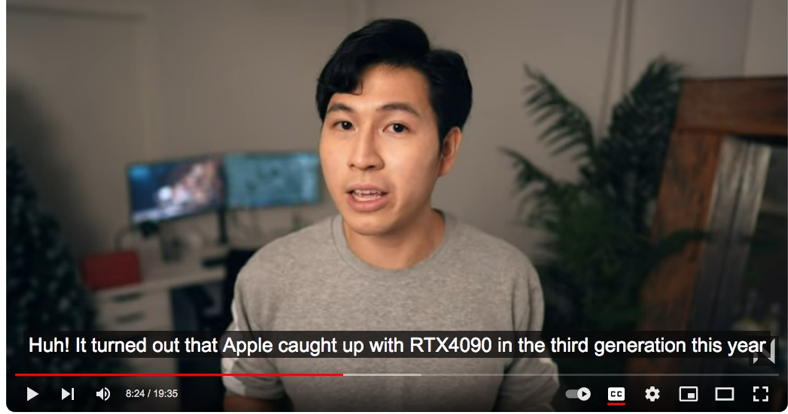Leaderboard
Popular Content
Showing content with the highest reputation on 12/03/2023 in all areas
-
Above 100mm IBIS become less efficient but if the lens has IS you can handheld, I regularly handheld 400mm2 points
-

24p is outdated
newfoundmass and one other reacted to kye for a topic
Computer displays are a long way from being superior to human vision, so it's all about compromises and the various aesthetics of each choice. I would encourage you to learn more about how human vision works, it can be very helpful when developing an aesthetic. A few things that might be of interest: Here's a research paper outlining that the human eye can perceive flicker at 500Hz: https://pubmed.ncbi.nlm.nih.gov/25644611/ Here's a research paper saying that people could see and interpret an image from a frame shown for 13ms, which is one frame in 77fps video: https://dspace.mit.edu/bitstream/handle/1721.1/107157/13414_2013_605_ReferencePDF.pdf;jsessionid=6850F7A807AB7EEEFA83FFEEE3ACCAEF?sequence=1 The human eye sees continually without "frames" and has continual motion-blur, normal video also has these with the motion blur represented as a proportion of the frame rate (where 360 degrees is 100%) but the human eye has a much faster frame rate than motion blur, so we might (for example) have a "shutter-angle" of dozens or hundreds of frames Video is an area where technology is improving rapidly and a lot of the time the newer things are better, but that's not always the case. The other thing to keep in mind is that there are different goals - some people want to create something that looks lifelike but other people want to create things that don't look real. Much of the tools and techniques in cinema and high-end TV production are to deliberately make things not look real, but to look surreal or 'larger than life' etc. I've been doing video and high-end audio for quite some time and have put many folks in front of high-end systems or shown people controlled tests of things back-to-back, and often people do notice differences but don't talk about them because they don't know what you're asking, or don't have the language to describe what they're seeing or hearing and don't want to sound dumb, or simply don't care and don't want to get into some long discussion. Asking people who have just seen a movie for the first time if they noticed "anything different" is a very strange approach - if they hadn't seen the film then everything about the film would have been different. Literally thousands of things - the costumes, the lighting, the seats, how loud it was, how this cinema smelled compared to the last one, etc. Better would be to sit people in front of a controlled test and show them two images with as few variables changed as possible. Even then it can be challenging. When I first started out I couldn't tell the difference between 24p and 60p, now I hate the way 60p looks and quite dislike 30p as well. Lots of people also knew what the 'soap opera effect' is, without being camera nerds..2 points -
24p is outdated
markr041 and one other reacted to Jedi Master for a topic
I went with four friends to see The Hobbit in a theater that showed it at 48 FPS. I knew it was at 48 FPS, but my friends didn’t. I asked them after the movie if they noticed anything different and none of them did. I liken this nostalgic liking of 24 FPS with hipster’s liking of vinyl LPs over CDs. Technically, CDs are much better in every measurable way than LPs, but these people somehow prefer LP sound despite the snap, crackle, and pops and the obvious distortion and wow and flutter. I suppose that’s because that’s what they’re used to or because they’re lemmings following the latest fad.2 points -

24p is outdated
Ty Harper and one other reacted to fuzzynormal for a topic
Ultimately, it's not a big deal. It's like people that are fussy about the type of wine they drink. They can understand and appreciate the nuances and subtleties -- and get incredibly particular about the flavours and details of it all. Other people simply don't care, they just like the buzz. As a filmmaker, you pour the wine you want to drink.2 points -

24p is outdated
Rinad Amir and one other reacted to fuzzynormal for a topic
Art is conceit. Cinema is a altered from reality by default. Because of that, it's perfectly fine when some filmmakers decide for it to absolutely fail to be accurate in certain ways. Flaws are beautiful. They invoke an alternate reality. Some filmmakers like 48 or 60fps. So be it. I like 24fps and a 360 degree shutter. My preferences ain't wrong, they're simply mine.2 points -
the displaying technology is improving, most 4k tv now has 60 hz or 120 hz or even 240 hz, youtube has 4k 60p, the trend will follow. new generation of viewers used to youtube 4k 60p never care about 24p. in the near future, 24p will be a nostalgic look, like betacam, lomocam, sepia, etc.2 points
-
No. 60p = sports 30p = TV 24 = cinema Sorry Tony, some things will never change.2 points
-
24p is hailed as cinematic. it was just a frugal approach at the time of film days. 5k 60p of gp 12 is so smooth. seeing is believing.1 point
-
First, comparing the in-camera (Flowstate) stabilization in 4K 60 with the 4:3 FreeFrame setting using Gyroflow stabilization in post: Second, 8K 24.0P video, complete with that beloved 24 fps motion: Third, a video shot in 4K 60P, complete with moving with the camera (forwards and backwards), the 2X zoom, 2X slow motion (from 4K 120P), and audio. Maybe I will try a night video. I wish it was a sunny day.1 point
-
it is interesting to see how people are locked in the stereotypic ideas. 24p for cinema, 30p for tv broadcast, 60p for sports. right now, holly wood block busters are typically action packed, green screen vfx focused. so high res high fr are actually very suitable for hollywood features, these are more sports like than classic drama dialogue center like. the classic drama which emphasizes on dialogue is moving into the broadcast or streaming service. so if 24p is critical for this kind of drama, actually 24p should be used for soap opera on tv or netflix. in summary, the paradigm has shifted. 60p should be for hollywood feature cinema 24p should be for tv soap opera, netfix 30p is still for news.1 point
-
The key innovation of the insta360 Ace Pro is its low-light stabilization setting. This appears, from my test video, to have almost eliminated the artifacts of digital stabilization while moving the camera in low light. Of course, all the digital noise reduction and processing results in a mushier video (compared to the non-processed (no noise reduction, no digital stabilization) video from the Pocket 3). But the results, if not looked at too closely, are impressive - colors are good and the dynamic range in "Pure Video" is pretty good too. My assessment about low light is that when the cameras are standing still, there is not that much difference - the difference is when the camera moves, given digital stabilization - GoPro is hopeless, and the insta360 Ace Pro does its magic, but the quality is still worse than mechanical stabilization, as seen in my video. To see the degradation from camera movement from the digital processing, look at the sign writing in the first insta360 clip at the end - when the camera is moving the print on the sign is doing peculiar things, when the camera stops, they become much clearer and precise. You do not se such a dramatic change at the end of the Pocket 3 version. One can invoke the low-light stabilization setting while shooting 8K 24P, so it would be interesting to see how that combination does at night, perhaps minimizing the mush. The "Pure Video" setting seems to push up exposure, and I reduced luma in post to make the video more realistic to the scenes. But I am not sure how that setting contributes to low-light prowess.1 point
-
While the C70 is a great compact cine cam, the fact it is RF S35 means you need to buy very expensive FF RF glass that you won't even be fully exploiting, unless you adapt with the speed booster. On the flip side, the FX6 is FF only so that locks you into FF glass. I really think both Canon & Sony need to release above +4K resolution FF cine cameras next so you can enjoy both FF & S35 native lenses. Currently the mirrorless offerings are way more flexible in that regard.1 point
-

24p is outdated
Tim Sewell reacted to Django for a topic
Actually if you wanna get technical, a properly mastered high-quality vinyl LP has much more DR than CD or even lossless codec file. That's why audiophiles respect vinyl so much. Take a look at these numbers from the DR database for Daft Punk's RAM album (the reference for mastering): and FYI, if you take care of vinyl, dust it off before playing and use a high-end player and cartridge, you will have zero crackle, pop, wow, flutter. Its like saying that analog film is all noisy and dusty. Vinyl is like IMAX 70mm.. with a proper scan it will be superior to your 2K/4K/8K digital footage. Analog is still very popular in audio production (much more so than in photo/film industry) and for good reason. And while its true that some hipsters buy into analog only for the retro/cool factor, its just as ignorant to claim analog inferior to digital. If you know what you're doing it most certainly is not.1 point -
24p is outdated
solovetski reacted to ND64 for a topic
Making houses with wood was also based on limitations in other construction materials at the time, as they were either hard to supply or supplied expensively. Today there is almost no limitations and concrete is cheap, but wood is still prefered because its environment friendly. Just because something is old, it doesn't mean it will be replaced with the new. 24p became a standard because it was the cheapest way to do motion picture. But it also replicates dreaming. I don't know about you by my dreams look like anything other than what I see on ESPN.1 point -
1 point
-
24p is outdated
Emanuel reacted to newfoundmass for a topic
Again, the issue wasn't the displays. The 48 fps version was limited to only 450 theaters because it wasn't well received. And, again, people will differentiate cinema from the video they watch on their phones, just as people always did with 30 fps on television.1 point -
insta360 Ace Pro versus DJI Pocket 3 at Night insta360 first then the Pocket 3 for each scene. insta360 Ace Pro set to Pure Video with low-light stabilization, sharpening low. DJI Pocket with noise reduction at the lowest level (-2) and 10bit HLG profile. Both auto white balance and auto exposure. No noise reduction in post. Pocket 3 HLG transformed using color management to REC709.1 point
-
24p is outdated
IronFilm reacted to BabsDoProd for a topic
With "Avatar 2" I made a post on REDUser about it complaining about the unique aspect of the film jumping back and forth between 24fps and 48fps when action scenes came up and declaring that it was jarring. There was a bit of discussion about it but based on other reviews and articles it was clear that it was a widespread problem. Had the whole film been HFR then that would be one thing but not switching back and forth. You also have to remember that with HFR, just as people can have when looking at old school video camera stuff in 60i, there are people that are so sensitive to the video motion that they get motion sickness. Those complaints have happened every time they've tried to do a HFR project. 24P has also been chosen as our main cinematic frame rate because most people can tolerate it for long periods of time unless someone goes back to doing wild shaky cam like in they did in the early 2000s. There is also a bit of a sensory overload the higher in frame rates we go and, in my opinion, many times the footage loses sharpness and that "magical" cinematic feel just goes away as motion blur gets compromised and the smoothness of the HFR takes over everything and becomes too apparent. I admit, it does look cool to crank things up and film in 120p, even on my RED One MX in 2K mode, but I can't see a reason to film that way for every project or to turn on the TV and see mostly 120p content, it's just not right for everything.1 point -
24p is outdated
markr041 reacted to Jedi Master for a topic
That's a defeatist attitude that will impede progress. When The Hobbit came out a few years ago, some people were ready to break out the pitchforks and torches and march on Hollywood, but I loved it--those movies looked much better to me than the typical 24 FPS stuff.1 point -
24p is outdated
markr041 reacted to Jedi Master for a topic
I agree with you. I don’t want footage that looks “cinematic”, I want footage that looks good, and higher frame rates look better to me. The only reason we were stuck with 24FPS was because film costs were lower at lower frame rates and the studios were cheap. I don’t like a bunch of other things that have become more or less standard in Hollywood. The biggest thing that irks me is hand-held footage. Some of it is so jittery it’s nearly vertigo-inducing. It wasn’t used in the old days because cameras were massive and not hand-holdable by any stretch of the imagination. Now that cameras are smaller and lighter, the trend is to use more and more hand-held footage in movies. Some claim it offers more of a “you are there” first-person experience, but I disagree. When I see the world with my own eyes, I don’t see a jittery, shaky view at all—it’s like my vision system has built-in IBIS. Another thing I don’t like, but seems to be gaining popularity is to add film-like grain to digital footage. This can only be due to some misplaced nostalgia for the old days, because why make the footage look worse? I prefer the pristine look of good digital, again because when I look at the world with my eyes, I don’t see any grain. I don’t need to be reminded that I’m watching a movie—I already know that.1 point -
MacBook Pro - M2 or M3
IronFilm reacted to Jedi Master for a topic
Interesting. I made the move in the opposite direction because my Mac Pros would always get slower and more unstable with every new version of MacOS. In the decade since I switched, I’ve had practically zero issues with Windows. I think the statement that you need to be a part time system administrator to use a Windows computer is hyperbole. If you have good, mainstream hardware, Windows doesn’t require any more sysadm work than MacOS. If you have weird, or old hardware, then yes, you’ll probably have more issues than with a computer where one company controls both the hardware and the OS.1 point -
For anyone doing 3D modeling, animation, rendering, the M3 is a major Update due to the new ray tracing acceleration. I decided against an M2 Studio to wait for next year’s M3 Studio: PCs with a Nvidia GPU card were always faster than a Mac for rendering 3D animation, for the same reasons PCs are faster in gaming. But now Neo Chan’s video demonstrates that his M3 laptop is roughly equal to his PC with a RTX4090 for 3D work. Here it was faster in rendering a Blender scene: The point is, M3 is much faster than M2 for 3D work. For those who want to do 3D in OSX it looks like a game changer.1 point
-
Help me decide: Canon C300 Mark III or Sony FX9
kye reacted to eatstoomuchjam for a topic
Sure, RGB microlenses on the CFA could cause some variance - and I certainly don't have a lot of insight to that. I've generally assumed that they're supplied by Sony since they sell both "color" and "monochrome" versions of the same sensors - and largely, the only difference in a color and monochrome sensor is the CFA. 😃 That's definitely relevant to ProRes/H.265 footage and somewhat with BM Raw, but not for cDNG and ProRes RAW. Perhaps there's metadata embedded in the container that instructs the editor/convertor for which color values to use when debayering? And if so, could the writers of the software allow people to override it?1 point -
How long is your piece of string? 😜 70mm (everything in FF terms) is a bit short for me in terms of a 'portrait' focal length other than perhaps indoors when space may be tight, otherwise outdoors I prefer anything from the trad 85 (though been using a 90 recently as my 'short' telephoto) through to 150mm. I didn't say I had a 35-150 though, just that it is my 'ideal focal range' for pretty much anything and everything outdoors. Pretty much bang on focal range for me for portraits outdoors, specifically couples at weddings, whether full length at a distance, or closer up. I like compression and will always pick a longer lens and work further away than a wider lens and work closer, if that option exists. For portraits, not a fan, - too far from the subject to communicate properly or too tight if I can. I am indeed in the process of moving from 70-200mm f4 over to 70-180mm f2.8 and from Lumix to Nikon/Tamron in this regard because on the lens side, it's a 1 stop faster, more shallow depth of field in a sharper, smaller (not much) and lighter (again, not by much) unit and as I have no real need for anything over 150mm other than very occasionally, the 70-180 works better for me. A weightless 28-200mm f2.8 would be glued on providing it did not extend when zooming like an excited donkey. I prefer non-extending zoom lenses, but they are quite rare. The Lumix 70-200 f4 is so beats the Tamron 70-180 in that regard, but the Tamron extended zoom length is not too obnoxious and the other benefits outweigh this small negative. But back to your weightless zoom otherwise, I can't see how I'd really use it any differently to having a 35-150 or a 70-180 or a 70-200, ie, my time above 150mm is limited. I would prefer NOT to have such a massive range in a single lens, because I prefer primes. I'm at heart a prime shooter for whom zooms make more sense so rarely shoot at anything but the extreme ends. The set up I am working towards with stills is; 20-40 but to me, it's 20 or 40, - there is nothing in between. It's simply 2 primes in one lens. I NEVER shoot anything between. Same as the 16-24 it replaced, it was always 16 or 24, end of. My 40mm f2 is my 'everything candid' lens because for me it is the perfect focal length. It's welded on to my Zf and is essentially a fixed lens point and shoot other than in an extreme emergency when I could stick on any compatible lens. My third and final lens is the 70-180, so it's a 70 and a 180. I could shoot it at anything in between and without wishing to sound like a complete moron, simple won't and it's a 70 (indoors) and a 70 or 180 outdoors. So my focal length set up = 20, 40, 70, 180 and these 4 focal lengths cover all my bases. I wouldn't cry if the 180 was 150, - I could live with that, but 180 has it's uses so is my '150' if that makes sense because that is the extreme end of that particular lens and I don't adhere to using zooms as twin lens primes to be in any way pedantic, never mind an arse, but because it's how I work and see things. A 28-300 would have zero use to me. Yes if I went on a safari I might want something longer and if I could only take one body and one lens, I might rent something. And if I shot sports, I'd buy something, but we're talking what I would personally do or use and think, not necessarily what anyone else might. This is why I really like Canon's 28-70 f2 and 24-105 f2.8 lenses because one is the perfect indoor lens for me (size & weight aside, but if I have to compromise anywhere, this is where I would) and the other a near perfect outdoor option...except 35-150 as in the Tamron would be better as a focal range, but I don't much care for the extending zoom and variable aperture. If someone was to make me that 'best possible real world' zoom, I reckon I could live with a 40-120mm f2.8 with some kind of hard stop mechanism that meant it cld be used as a 40/80/120. Take my money. I'd need something wider (such as my 20-40) but would trade the lack of that longer end for more megapixels and a bit of cropping. Personally, I like compression. Obviously the longer the focal length, the more potential there is for compression depending on all the usual caveats etc, but IMO, it's not too extreme 100-200, whereas with using say wide angle lenses for portraits, is just to wacky and unnatural to my eye. In fact portraits with anything wider than 28mm is not to my taste unless it's full length. Above 150, as above, for me, beginning to lose some contact/direction with the subject. Conclusion. As with all these things, opinions will vary, there is no right or wrong, only what works for you, for me or for someone else, which is often not the same thing. In fact whatever I do is rarely what anyone else, never mind the mainstream is doing. For me that is partly deliberate but mainly, 'just because'. They don't make boxes in my shape.1 point
-
If Lumix wants to blow everyone out of the water ( now they have decent AF) they should release a S1H2 and a GH7 with some kind of ND. The S2 would be fine being a high res photo centric version without ND. Also 6K open gate 50p no crop. If they can do that for around 4000€ along with all their other strong points then I’m in.1 point
-
I have a Macbook Pro M1 Pro 16” with 16gb ram. The screen is great and in general it’s a good computer but I’d definitely get at least 32gb of ram if I were ti buy it again. Running out of ram is the computer’s biggest weakness.1 point
-
Last but not least, something left outside from the above-posted is their contribution to the synthetic editing vs the analytic approach from Hollywood tradition, where the work of Delleuze will actually focus the emphasis on time vs space. And with a tremendous impact on the extension of the duration of shots. The lighter the capture rig is, the more flexible this process can happen. As well the whole set up of the design and découpage of the scenes to shoot, actors directing (or not when it is the reality to prevail as subject). https://movieperception.wordpress.com/2015/02/24/analytic-vs-synthetic-editing/ BTW, already mentioned from a post I had placed along this thread 22 months ago:1 point
-

DigitalRev TV DEAD
kye reacted to The Dancing Babamef for a topic
Was dead a long time ago. I was a kid watching their videos with my D5100. Then Alamby left, Then Kai, Then Lok. New people popped in but they didn't have the same energy. I unsubbed and forgot about them, subbed individually to Kai and Lok. Literally the same thing with Machinima and the crew that was Bruce and Adam.1 point -

Hey, KODAK Super 8 Camera is out there!
Davide DB reacted to Tim Sewell for a topic
It's hipster heaven. Will look great sitting next to my wooden headphones!1 point -

Hey, KODAK Super 8 Camera is out there!
IronFilm reacted to Andrew Reid for a topic
I would rather see a Super 16mm Digital Bolex CCD type camera than Super 8mm film bodies, but yes it should be kept alive. Kodak will do a good job of killing it with products like this though.1 point -
Sounds like every wedding I have been to for the last 4-5 years…which has been circa 100+ (would have been more if it wasn’t for covid). EXACTLY, including that 60+ gent fumbling with his archaic DSLR and that Fuji hipster couple 😂1 point
-
Look around what are people local to you shooting with? Most likely they're using Sony FX6 (or perhaps FX9) bodies. So just follow the herd and do the same. But there are pockets of local groups of people around which have gone in another direction, such as they're mainly using Canon C500mk2 for documentary / corporates / etc which have a reasonable budget. Often all it takes is just a few key leaders or production companies in that local region to go together down a certain path, and the whole local region follows them, and there isn't a single Sony camera in sight. However, if you are working purely for yourself / in house, then it doesn't matter what brand or camera model you choose! But if you are working for others, then following what others use matters a lot. Had a friend who purchased the Sony FS7 right when it was released, did pretty well working with that, and he got to a point that he felt like he was "outgrowing the FS7" and had the money to buy something better. By this point in time the ARRI ALEXA Mini had been out for a couple of years, had proven itself, and no longer did you have crazy insane long wait list times if you wanted to buy one himself. But a ALEXA Mini was way outside is budget range. So what is the natural upgrade from a FS7? The F5/F55 are "upgrades", but are more similar than different. Definitely not what he was seeking. What then? He settled upon the Panasonic Varicam LT, which had recently been released (came out the year after the ARRI ALEXA Mini). He sold his Sony FS7 to raise extra funds, with his extra saved up money, he purchased a brand new Panasonic Varicam LT. (but he only got the Varicam after very extensively testing it, renting and borrowing it from others. Not just to run tests on it, but to use it on real world productions too. I worked on a couple of those productions which he shot with a Varicam LT, prior to him buying his own. He really did very very thoroughly all of his homework before settling on a new camera to buy) Seems like a rational decision. Was the next step up in price (over double the price of a FS7) and quality from a FS7. Has much better low light performance, & much better color science than the FS7. Plus did timecode and raw better than the FS7. In a way, the Varicam LT was even "better" than the ALEXA Mini, with better slow motion, better low light, better audio, and true 4K. (only downsides being it is bigger/heavier than a Mini, and it is "not an ARRI") Well, what seemed like a great idea on paper, in reality was one of his worst financial decisions. Because for the higher end jobs above the FS7 level, then usually they only want an ARRI camera. He's not landing the higher end jobs with the Varicam LT. (plus ARRI cameras are cheaper than you think, relative to the total cost of a project. It doesn't make sense for them to pinch pennies and settle for the cheaper Varicam LT) Thus he wasn't earning any extra money due to spending almost double the FS7 amount on a new Varicam LT camera. But it was even worse than this, the Panasonic Varicam LT was losing him money. Because the bread and butter FS7 jobs were no longer hiring him as much, as they don't want to go with some weirdly different new camera, they want the tried and trusted Sony FS7 which all their other shooters use and slots perfectly into their workflow and productions. Owning the Panasonic Varicam LT was a lose-lose situation for him. Quite sad really, even though on paper the Varicam LT was undeniably a much "better" camera than a Sony FS7 (even "better" than an ARRI ALEXA Mini in a fair few ways as well).1 point







